Longevity in the animal kingdom is often linked to unique adaptations and survival strategies, and some reptiles are especially remarkable for their lengthy lifespans. From giant tortoises that can live well over a century to stealthy Komodo dragons and ancient tuataras, these reptiles have developed extraordinary traits that allow them to thrive in various environments for decades. Whether it’s through slow metabolisms, protective shells, or unique diets, each of these reptiles has its own way of enduring the challenges of the wild. Here, we’ll explore 25 fascinating reptiles known for their surprising longevity and uncover the factors that help them live such impressively long lives.
Galápagos Tortoise
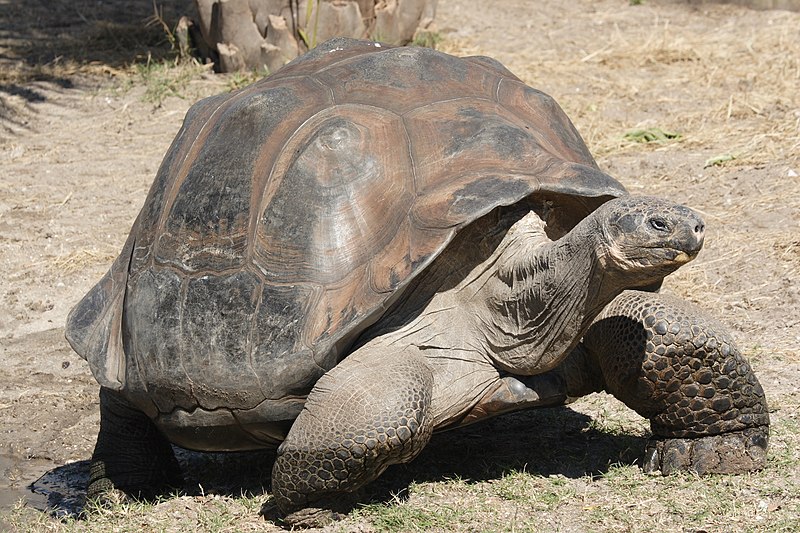
Galápagos tortoises, some of the longest-living animals on Earth, are renowned for reaching ages well over 150 years. These gentle giants can weigh up to 600 pounds, and their size is believed to contribute to their lengthy lives by offering protection from predators. Living on sparse diets of grasses, cacti, and fruits, these tortoises make the most of their limited resources by conserving energy through minimal movement. They often bask in the sun to regulate their body temperature and avoid high-energy activities. Their slow metabolic rates, combined with minimal threats from predators, allow them to age slowly. Conservation programs on the Galápagos Islands have bolstered their numbers, as these tortoises were once endangered due to hunting and habitat destruction. Their resilience and longevity make them symbols of endurance and adaptation.
Aldabra Giant Tortoise
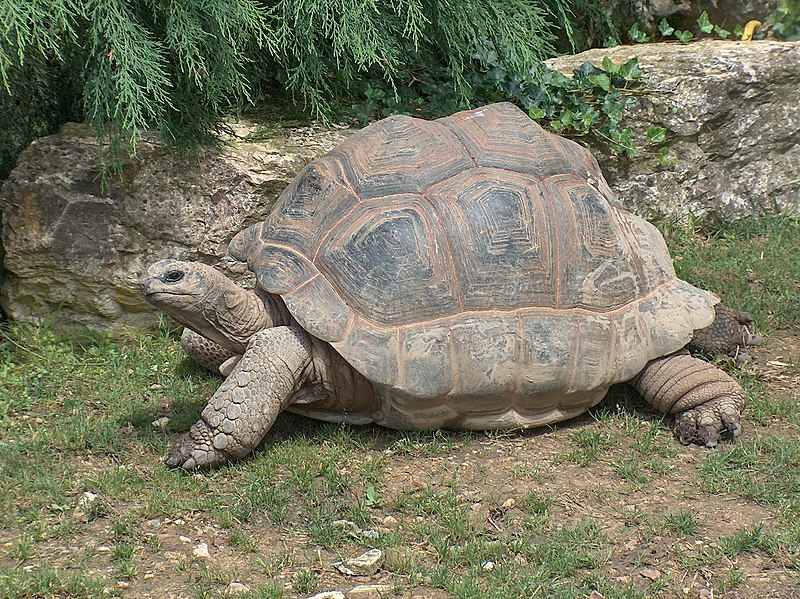
Aldabra giant tortoises, native to the Aldabra Atoll in the Indian Ocean, have been documented to live over 100 years. These tortoises are massive, often reaching up to 500 pounds, with large, high-domed shells that protect them from predators. They are known for their gentle nature and primarily herbivorous diet, which includes grasses, leaves, and even carrion when food is scarce. Their adaptability to harsh conditions, including limited food and water, has made them resilient survivors. Conservationists have worked to protect their habitats, as these tortoises play an essential role in their ecosystems by dispersing seeds. Their extended lifespan is likely due to their slow metabolisms and the relative safety of their natural habitat. With continued conservation efforts, Aldabra tortoises thrive as examples of remarkable longevity.
Greek Tortoise
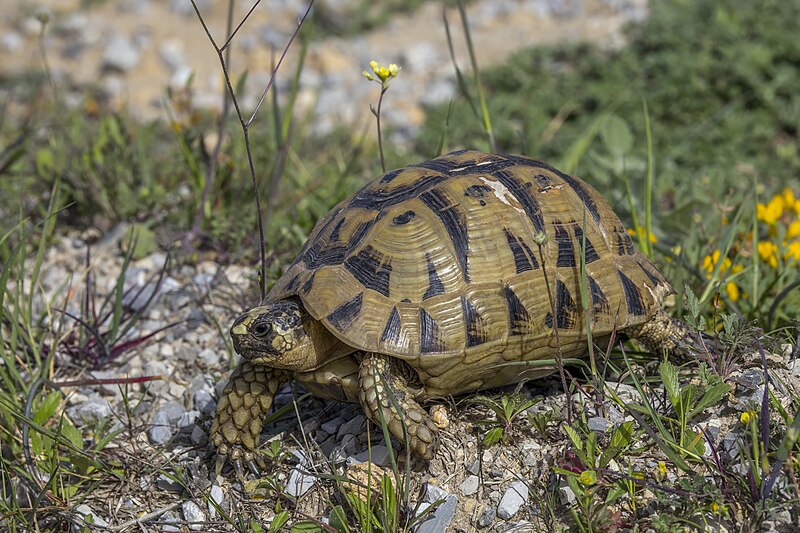
Greek tortoises, commonly found across Europe and Asia, can live up to 125 years under optimal conditions. These tortoises have small, compact, oval-shaped shells that protect them from predators and environmental threats. They are adaptable creatures, able to thrive in diverse climates, from Mediterranean woodlands to arid areas. As herbivores, they graze on a variety of plants, including leafy greens and grasses, which provide the nutrients necessary for their steady, slow growth. Their resilience and ability to survive with minimal water make them hardy and long-lived. Greek tortoises are also popular in captivity due to their manageable size, but they require specific care for longevity. Their adaptability and durability contribute to their ability to live well over a century.
American Alligator
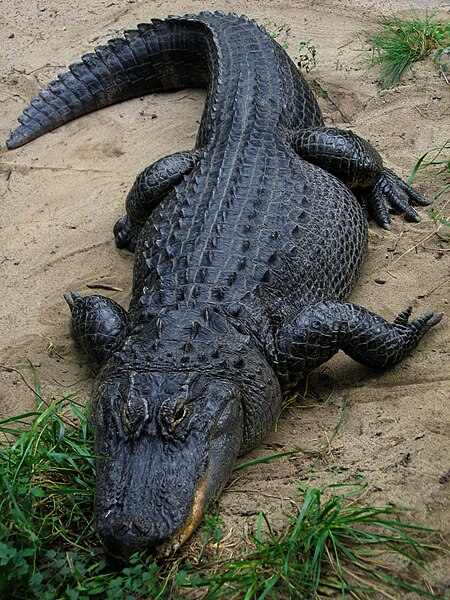
American alligators, found in the southeastern United States, are known to live up to 70 years in the wild. They are apex predators, playing a crucial role in maintaining ecological balance in wetlands and freshwater systems. These alligators have powerful jaws and strong, muscular bodies, enabling them to catch and consume a wide range of prey, from fish to birds and small mammals. Their slow metabolism and ability to survive extended periods without food help them conserve energy. Additionally, their tough, armored skin provides protection against predators and environmental threats. American alligators are skilled at healing, often recovering from injuries that would be fatal to other animals. Their resilience and adaptability have made them one of the longest-living reptile species in North America.
Tuatara
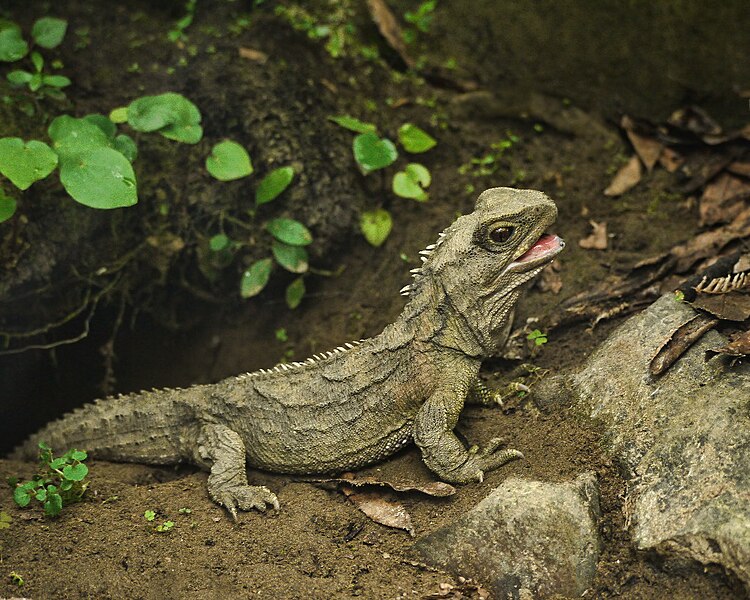
The tuatara, a “living fossil” native to New Zealand, has existed for over 200 million years and can live up to 100 years. Unlike typical lizards, tuataras have unique skeletal structures and a “third eye” that senses light, aiding in regulating circadian rhythms. They have slow growth rates and can survive with minimal food, which helps sustain their longevity. Tuataras inhabit rocky areas and burrows where they feed on insects, small reptiles, and even bird eggs. Their low metabolic rate, paired with a cold-blooded physiology, reduces their energy needs significantly. Conservation efforts have been essential in preserving this ancient species, as they are highly vulnerable to habitat changes and invasive species. Their unique adaptations make them a remarkable example of evolutionary resilience and longevity.
Nile Crocodile
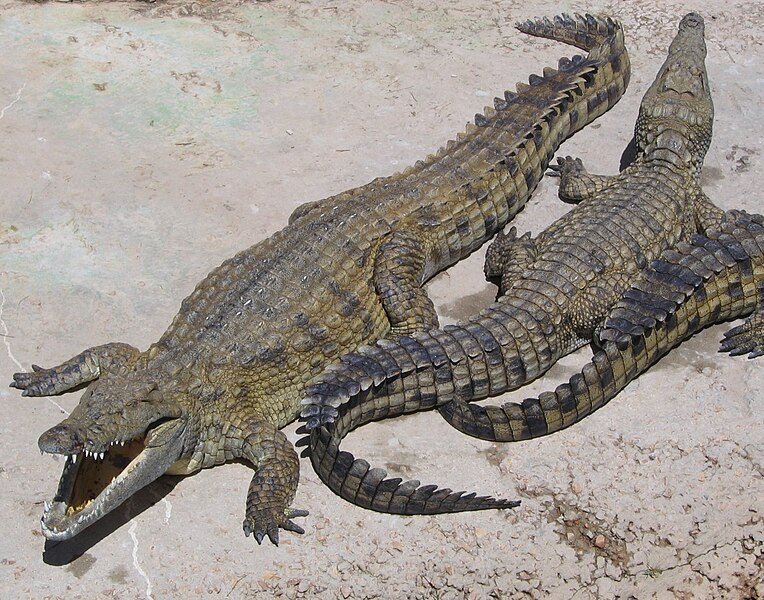
Nile crocodiles, often regarded as one of Africa’s most powerful predators, can live up to 80 years in the wild. These reptiles are known for their impressive size, with some reaching over 20 feet in length, and their strong, armor-like skin that provides significant protection. They are ambush predators, relying on patience and stealth to capture prey, such as fish, birds, and larger mammals, in the rivers and lakes they inhabit. Nile crocodiles can withstand extended periods of drought, as they often dig into riverbanks to remain moist. Their long lifespan is partly due to a robust immune system that fights off infections. Although they have a fearsome reputation, they are essential to their ecosystems by keeping prey populations in check. Conservationists continue to monitor and protect these ancient survivors.
Indian Star Tortoise

Indian star tortoises, easily recognizable by the star-shaped patterns on their shells, can live over 80 years. Native to India and Sri Lanka, they are well-suited to hot, dry climates, where they thrive on a diet of grasses, fruits, and flowers. These tortoises are known for their reclusive behavior, often seeking shelter during the hottest parts of the day. Their longevity is linked to their slow metabolism and efficient use of water, which allows them to survive in arid environments. They are vulnerable in the wild due to the illegal pet trade, which has led to declining populations. However, conservation programs are working to protect them in their natural habitats. Their beauty and endurance continue to fascinate reptile enthusiasts and researchers alike.
Red-Eared Slider
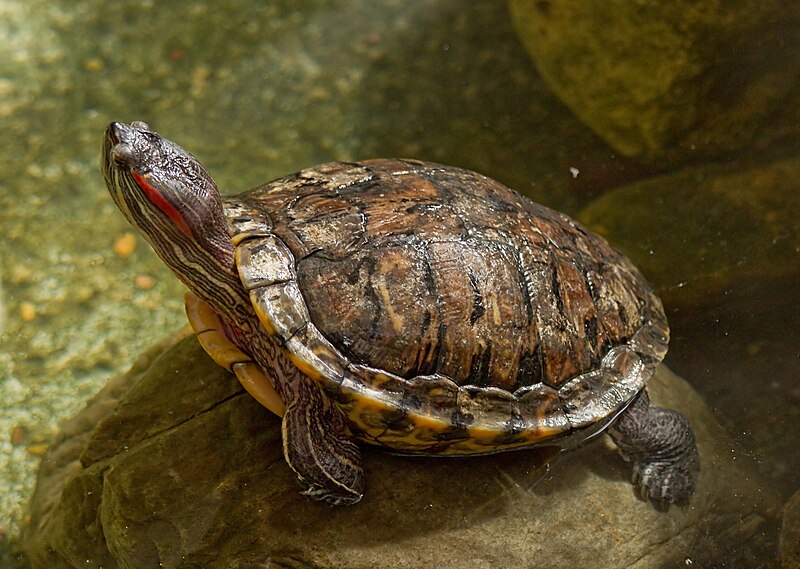
Red-eared sliders, recognizable by the red streaks near their ears, are commonly found in North America and can live up to 40 years. They thrive in various freshwater environments, from rivers to ponds, and are highly adaptable, often coexisting in urban areas. These turtles are omnivores, consuming insects, fish, and aquatic plants, which provide essential nutrients for growth and health. Red-eared sliders are known for their high reproductive rate, although many young do not survive to adulthood. Their longevity is supported by strong immune systems that help them fight off diseases. They are popular pets, though they require proper care to reach their full lifespan. With their adaptable nature, red-eared sliders exemplify resilience and long-term survival in diverse habitats.
Gopher Tortoise
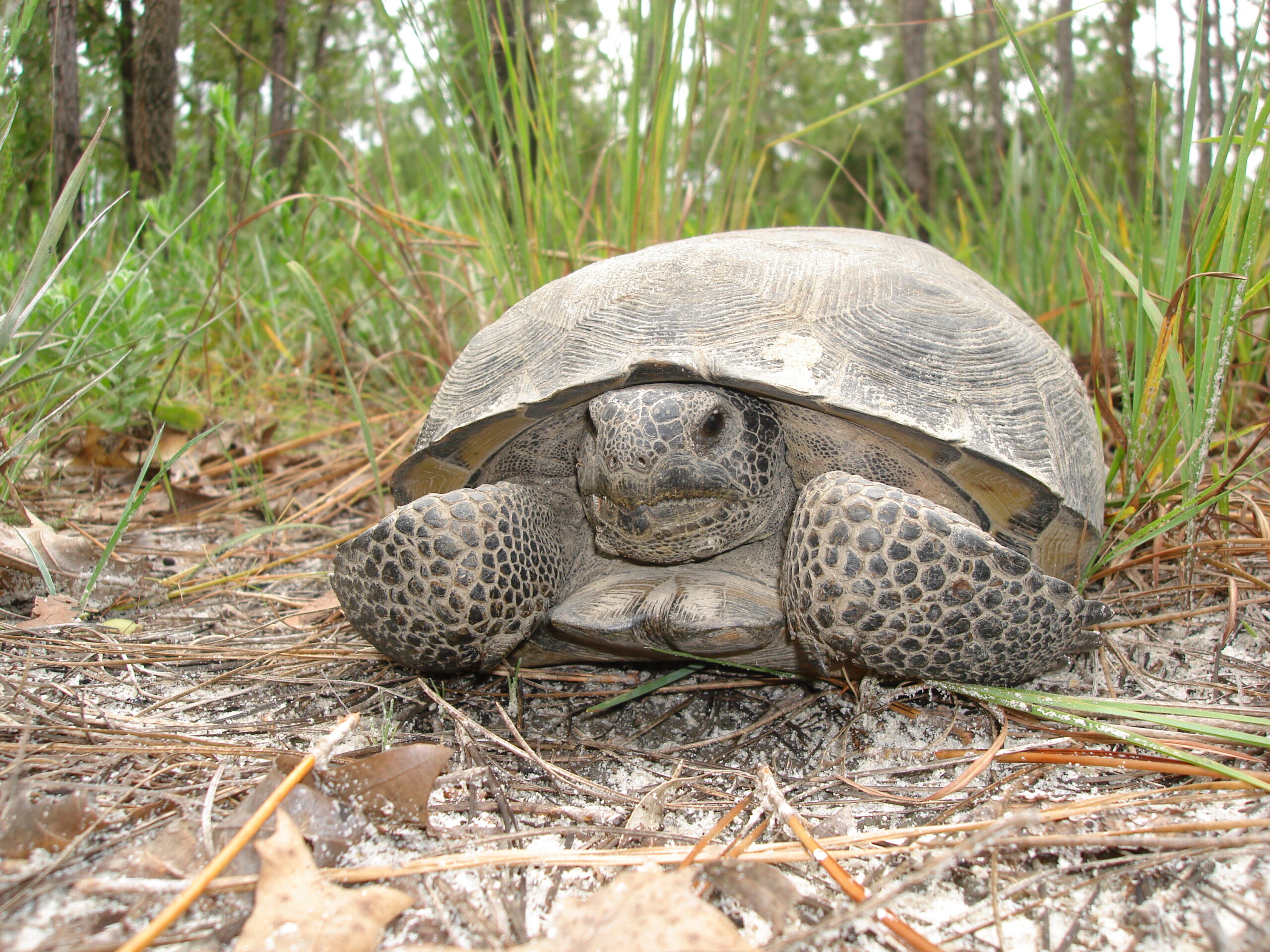
Gopher tortoises, found in the southeastern United States, are known for their burrowing abilities and can live up to 60 years. Their extensive burrows, which can reach depths of up to 40 feet, provide shelter for over 300 other species, including birds, snakes, and small mammals. Gopher tortoises are herbivores, primarily eating grasses, flowers, and fruits, which supports their slow, steady growth. They are highly territorial and often defend their burrows from intruders. Their strong shells and ability to retreat underground protect them from predators and harsh weather. Conservation efforts focus on preserving their habitats, as they are essential for many species. Their role as keystone species and their longevity make gopher tortoises vital to their ecosystems.
Leatherback Sea Turtle
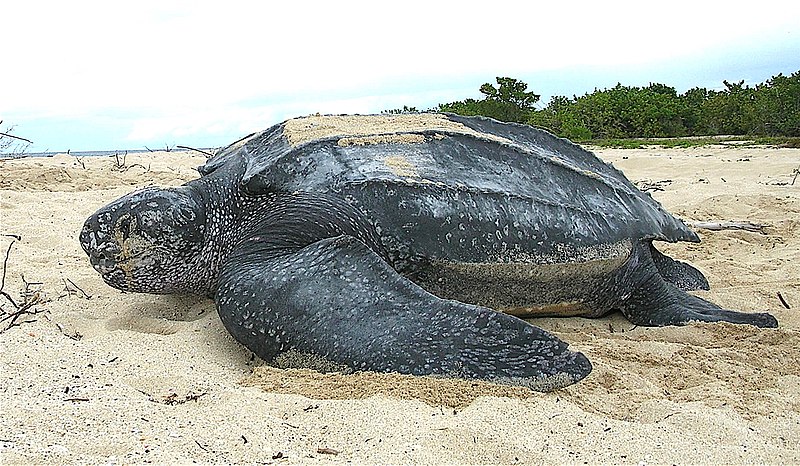
Leatherback sea turtles, the largest sea turtles, can live up to 50 years in the wild and are known for their extensive migrations. Unlike other sea turtles, leatherbacks have leathery, flexible shells, which aid in deep dives and buoyancy control. These oceanic giants feed primarily on jellyfish, helping to control jellyfish populations and maintain ecological balance. They travel thousands of miles across oceans to reach nesting sites, guided by Earth’s magnetic fields. Despite facing threats from pollution, fishing, and climate change, conservation efforts aim to protect their nesting beaches and migratory paths. Leatherbacks are known for their resilience to temperature changes, allowing them to inhabit both warm and cold waters. Their endurance and adaptability make them one of the most remarkable marine reptiles.
Green Sea Turtle
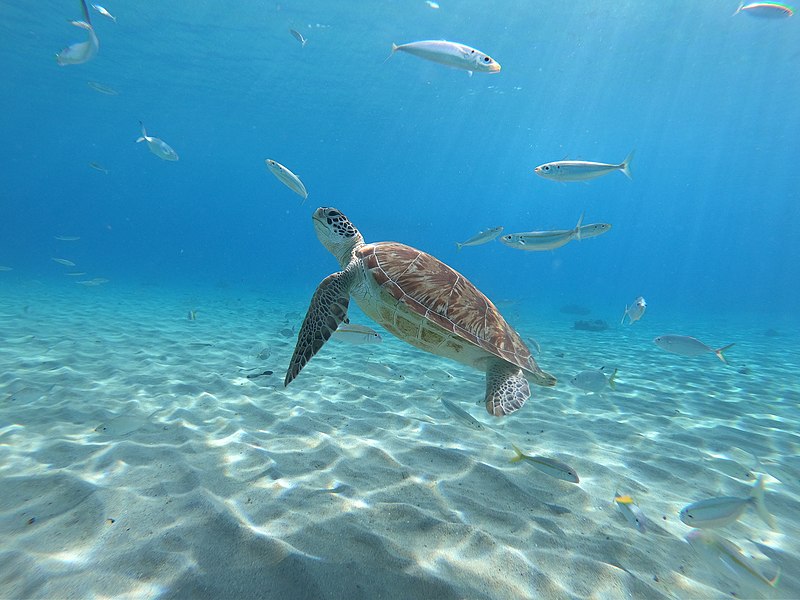
Green sea turtles, recognized by their smooth, olive-green shells, can live up to 80 years and are widely distributed across tropical and subtropical oceans. Unlike many sea turtles, they are herbivorous, feeding on sea grasses and algae, which supports healthy marine ecosystems. Their migratory journeys span thousands of miles, with females returning to their birthplace beaches to lay eggs. Green sea turtles are critical to maintaining sea grass beds, which provide shelter and food for numerous marine species. Although they face threats from poaching and habitat loss, they are protected under international laws, with conservationists working to secure nesting sites. Their resilience and remarkable life span make green sea turtles icons of marine conservation.
Common Snapping Turtle

Common snapping turtles, native to North America, are resilient survivors that can live up to 50 years. With their strong jaws and spiky shells, they have an imposing appearance and are known for their defensive behavior. These turtles inhabit slow-moving rivers, lakes, and ponds, where they are primarily carnivorous, feeding on fish, frogs, and birds. Their tough skin and immune systems help them resist diseases that affect other aquatic species. Despite their aggressive reputation, snapping turtles are crucial for maintaining balanced ecosystems by controlling populations of smaller animals. Conservationists work to protect their habitats, as they face threats from pollution and habitat destruction. Their resilience and adaptability have made them successful survivors in the wild.
Eastern Box Turtle

Eastern box turtles, commonly found in the United States, can live up to 40 years in the wild, though some individuals have been recorded living much longer. They are named for their hinged shells, which allow them to fully close when threatened, offering protection from predators. These turtles are omnivorous, feeding on a diverse diet that includes insects, berries, and fungi, which provide essential nutrients. Box turtles grow slowly, and their longevity is supported by low metabolic rates and limited movement. Unfortunately, habitat loss and road mortality are significant threats to their populations. Conservation efforts focus on habitat preservation and educating the public on their importance. Their adaptability and defensive mechanisms make eastern box turtles enduring inhabitants of American woodlands.
Komodo Dragon
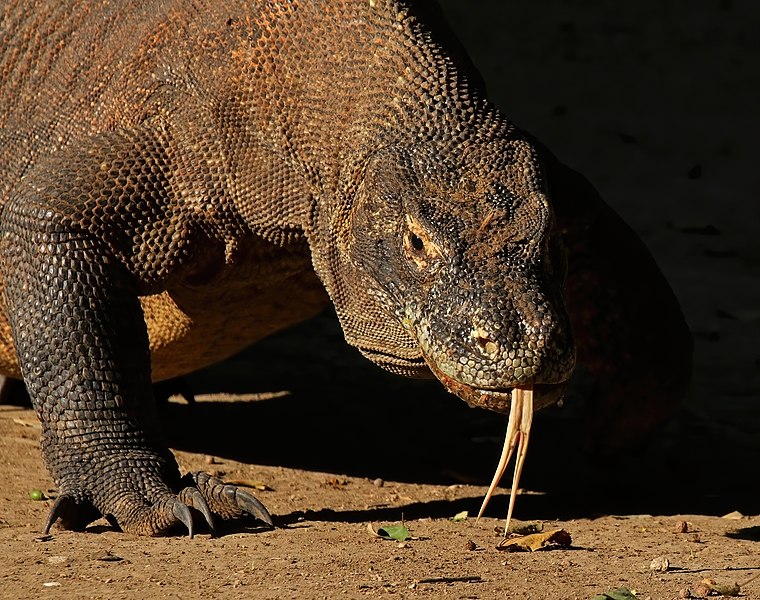
Komodo dragons, native to Indonesia, are the largest lizards in the world, capable of living up to 30 years. With their powerful build and deadly saliva, they are skilled hunters, preying on deer, birds, and other small animals. Komodo dragons are ambush predators, using stealth and patience to capture prey effectively. They have a robust immune system, which protects them from infections and allows them to heal quickly. Their impressive size and strength provide protection from most predators, enabling them to live relatively undisturbed in the wild. Conservationists closely monitor Komodo dragon populations due to habitat loss and human interference. These unique reptiles are symbols of Indonesia’s biodiversity and demonstrate remarkable adaptations that support their longevity.
Radiated Tortoise
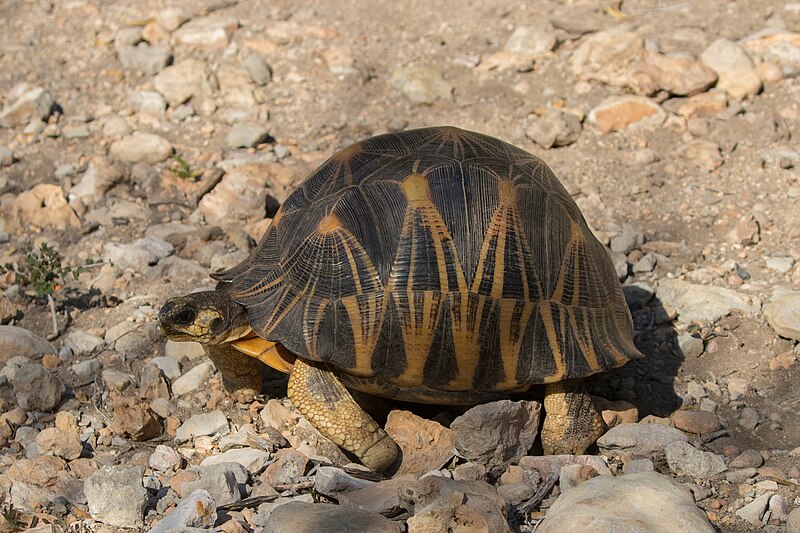
Radiated tortoises, beyond their beautiful, star-patterned shells, have adaptations that allow them to thrive in the arid regions of southern Madagascar. Their shells are not only for protection but also serve as camouflage among the dry grasses and rocky landscapes. These tortoises are primarily herbivorous, feeding on a variety of plants, including grasses and cacti, which provide necessary hydration. Their slow metabolism enables them to survive on minimal food and water, crucial for their long lifespans. Conservation efforts are essential for this species, as their habitat is under threat from deforestation and the illegal pet trade. Radiated tortoises are often kept in protected reserves to ensure their survival. Their combination of resilience and unique shell patterns make them a fascinating subject for biologists and conservationists alike.
Pancake Tortoise
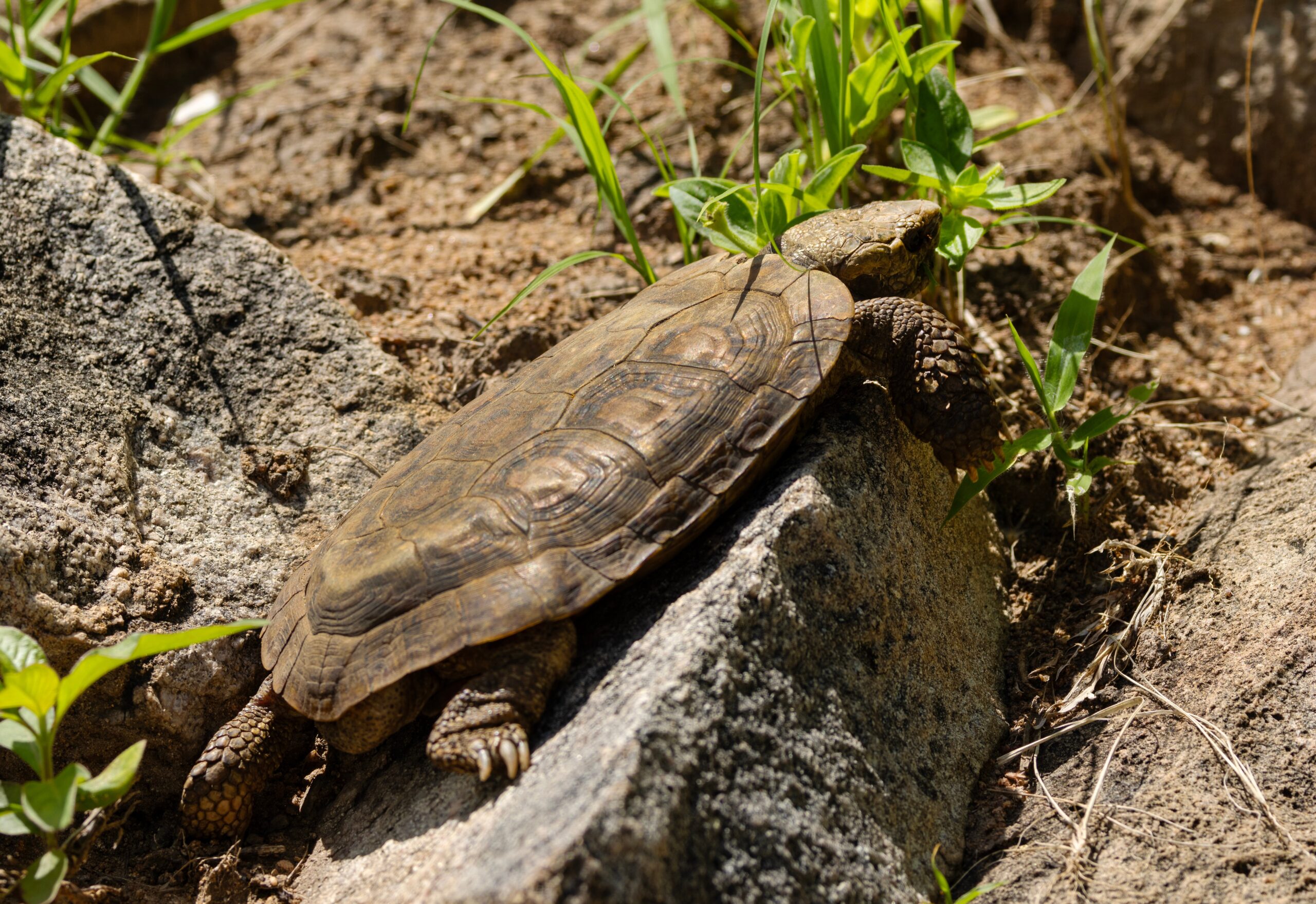
The pancake tortoise, unlike most tortoises, has a shell that is remarkably thin and flexible, allowing it to squeeze into tight crevices in rocky terrain. This adaptation helps them evade predators and survive in their East African habitats, where food and water can be scarce. Due to their agility, pancake tortoises can also escape quickly from danger, an unusual trait for a tortoise. They are primarily herbivorous, feeding on grasses and dry vegetation that provide essential nutrients. Their unique shell structure and stealthy nature contribute significantly to their longevity in the wild. Sadly, habitat loss and poaching threaten their populations. Conservationists have begun breeding programs to help bolster their numbers, ensuring that their unique adaptations are preserved for future generations.
African Spurred Tortoise
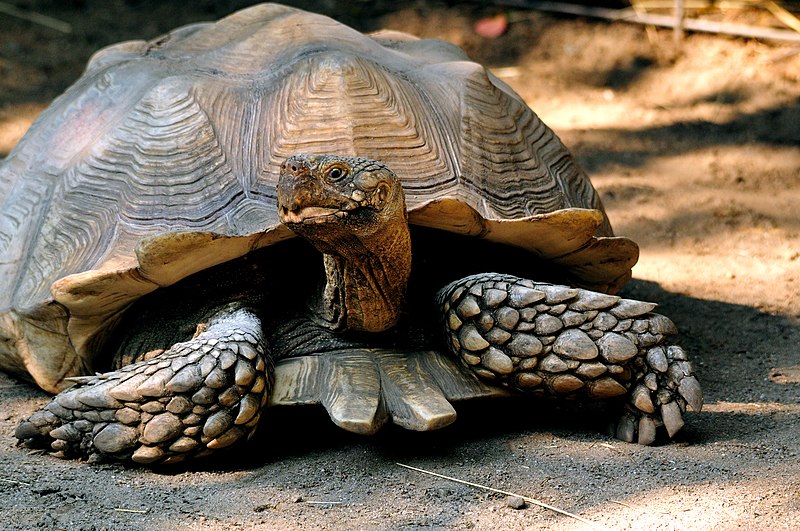
The African spurred tortoise, also known as the sulcata tortoise, is one of the largest tortoise species and is native to the Sahel region of Africa. These tortoises are well adapted to desert climates, able to dig deep burrows up to 10 feet underground to escape the intense heat. With powerful, spurred legs, they can move surprisingly fast for their size. Their diet consists mainly of tough grasses and dry vegetation, which they can digest efficiently thanks to their specialized gut flora. Despite their massive size, they are gentle creatures and have become popular pets, though they require ample space and resources. Conservationists warn that they should only be kept by experienced handlers due to their specific needs. The sulcata’s remarkable adaptations and hardy nature contribute to its reputation as one of the longest-living tortoises.
Burmese Python
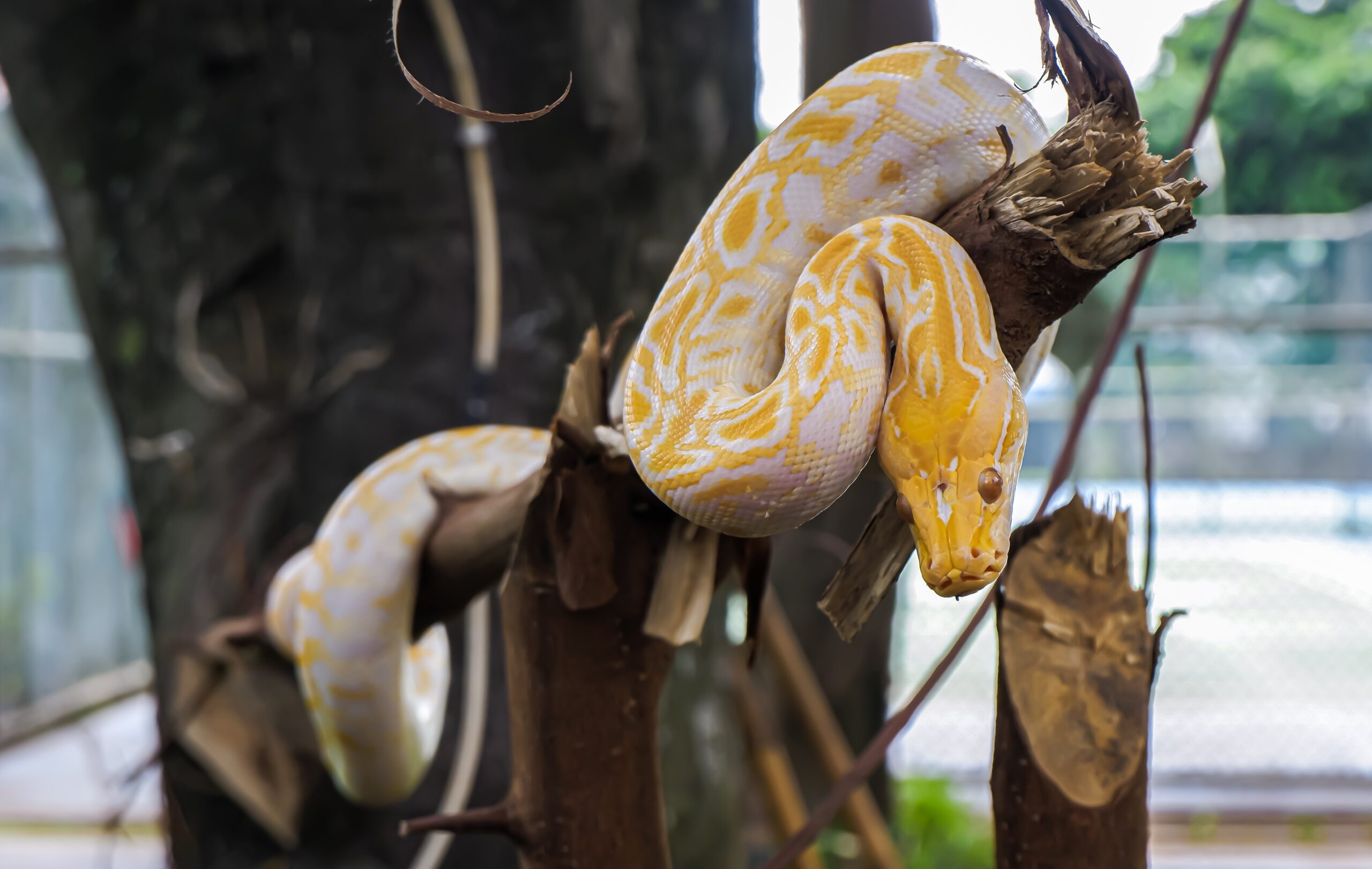
Burmese pythons, among the largest snake species in the world, are native to Southeast Asia and can live over two decades in captivity. These impressive snakes can grow over 18 feet long, using their muscular bodies to constrict prey. Adapted to tropical climates, they are skilled swimmers and often inhabit marshes, forests, and grasslands. Their diet mainly consists of mammals and birds, providing the protein needed for their large size and longevity. Burmese pythons have a strong immune system, allowing them to thrive even in captivity. However, in the wild, they face challenges from habitat loss and are often hunted for their skin. With careful handling, they can make long-lived companions in captivity, intriguing snake enthusiasts with their massive size and unique behaviors.
Mexican Beaded Lizard

The Mexican beaded lizard is one of only two venomous lizards, along with the Gila monster. Native to Mexico, they are identifiable by their beaded, rough scales that serve as protection against predators. Unlike faster reptiles, these lizards rely on their venomous bite and powerful jaws to capture and subdue prey. Their diet includes small mammals, birds, and eggs, which they consume infrequently due to their slow metabolism. As nocturnal animals, they spend much of the day hiding in burrows or rocky crevices. Their unique adaptations allow them to live up to 30 years in the wild, though habitat loss has placed them under conservation concern. The Mexican beaded lizard’s combination of venom and resilience makes it a unique subject for researchers.
Green Anaconda
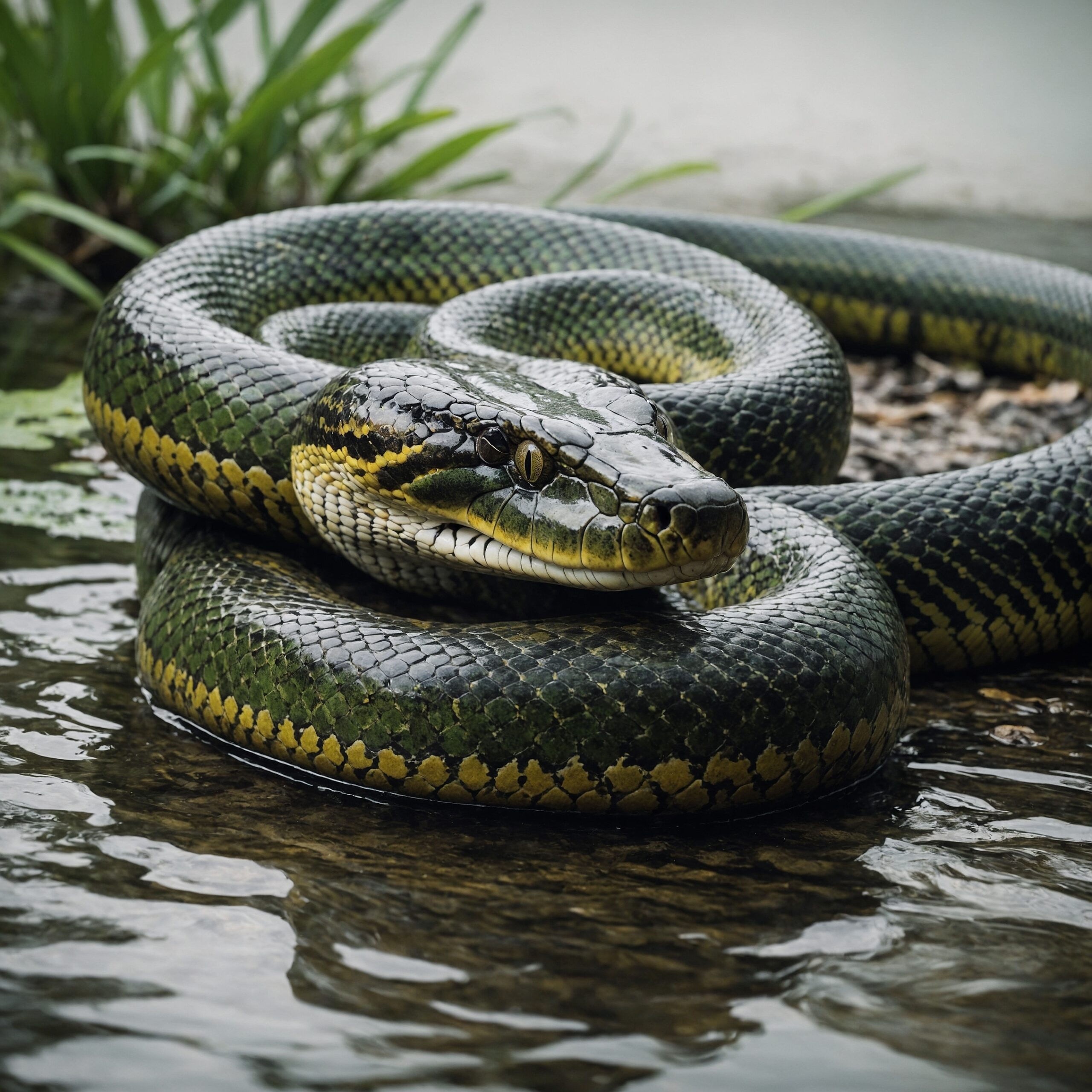
The green anaconda, one of the heaviest snakes globally, is a semi-aquatic giant native to the Amazon Basin in South America. Known for their immense strength, these snakes can weigh over 200 pounds and grow more than 20 feet long. Anacondas are solitary hunters, using their muscular bodies to constrict and overpower prey such as fish, birds, and mammals. Their affinity for water provides a thermal advantage, allowing them to regulate body temperature and conserve energy. Unlike most snakes, anacondas give birth to live young, a trait that may contribute to their longevity. They face few natural predators, enabling them to live long lives in the wild. Conservationists are working to protect their habitats, as they are essential to maintaining ecological balance in aquatic environments.
Chinese Alligator
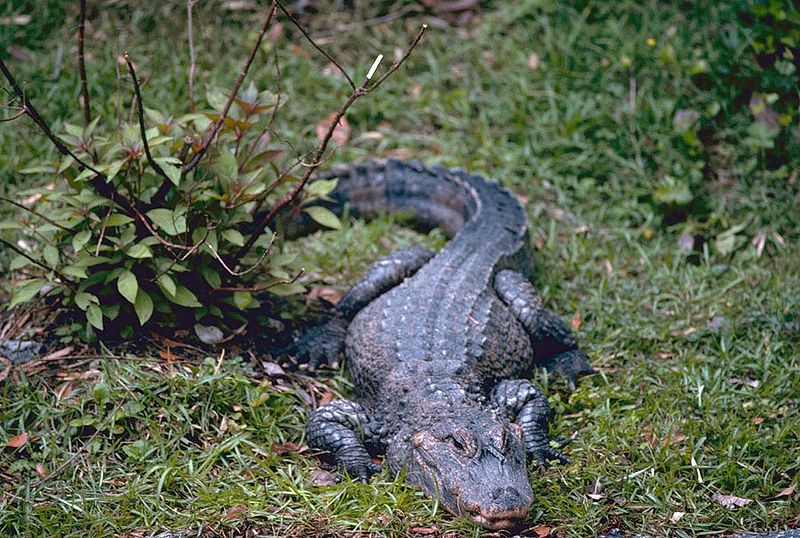
The Chinese alligator is one of the rarest reptiles, with only a few hundred left in the wild due to habitat loss along the Yangtze River. These small, armored alligators rarely grow larger than 5 feet but have a reputation for longevity, often living up to 50 years. Adapted to cooler climates, Chinese alligators spend part of the year hibernating in burrows. Their diet includes fish, snails, and small mammals, which they catch with their strong, sharp jaws. Conservation efforts are underway in China to reintroduce captive-bred alligators to the wild. Their small size and adaptability to colder climates make them unique among alligators. Despite their endangered status, Chinese alligators represent a symbol of resilience and adaptation in challenging environments.
Desert Tortoise
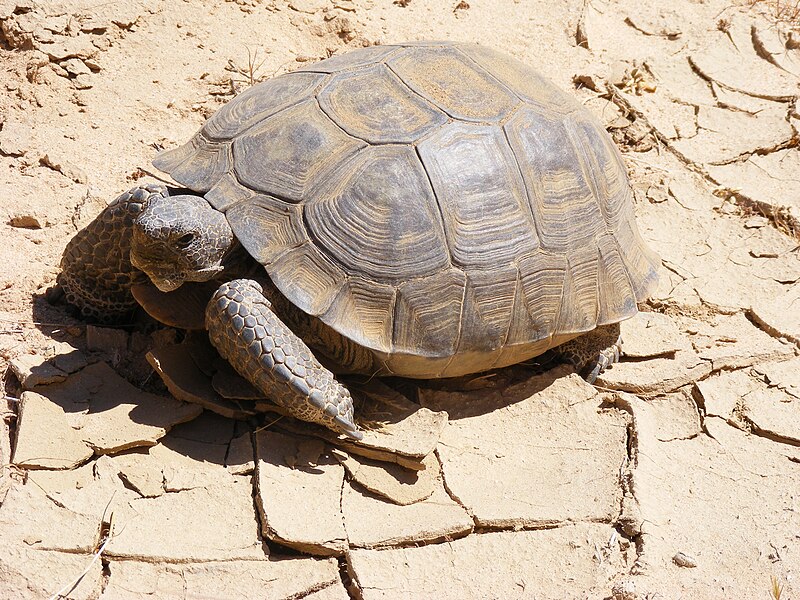
The desert tortoise, native to the arid regions of the southwestern United States, is well-adapted to survive extreme conditions. These tortoises can live up to 80 years, a feat made possible by their ability to store water in their bladders and survive on minimal resources. Their diet includes desert plants like grasses, wildflowers, and even prickly cacti, providing essential hydration. During intense summer heat, they retreat to deep burrows, where they spend up to 95% of their lives. Desert tortoises play a crucial ecological role, as their burrows provide shelter for numerous other desert animals. They face threats from urban development and disease, leading to conservation measures aimed at protecting their habitats. Their resilience to drought and extreme temperatures makes them a remarkable example of survival in harsh conditions.
Nile Monitor
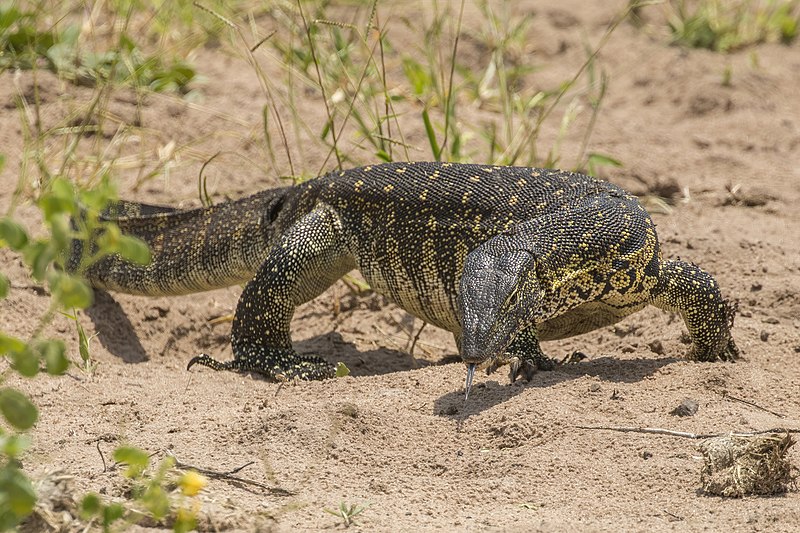
The Nile monitor, native to Africa, is one of the largest and most intelligent lizard species, capable of living up to 20 years. These agile, muscular reptiles can reach over 7 feet in length and are excellent swimmers. Nile monitors are opportunistic hunters, preying on a wide variety of animals, including fish, birds, and small mammals. Their sharp claws and powerful jaws make them formidable predators. Adaptable to various habitats, from riverbanks to savannas, Nile monitors have few natural enemies. Their resilience allows them to thrive in both wild and urban areas, where they sometimes come into conflict with humans. The combination of strength, intelligence, and adaptability ensures their longevity in the wild.
Western Diamondback Rattlesnake
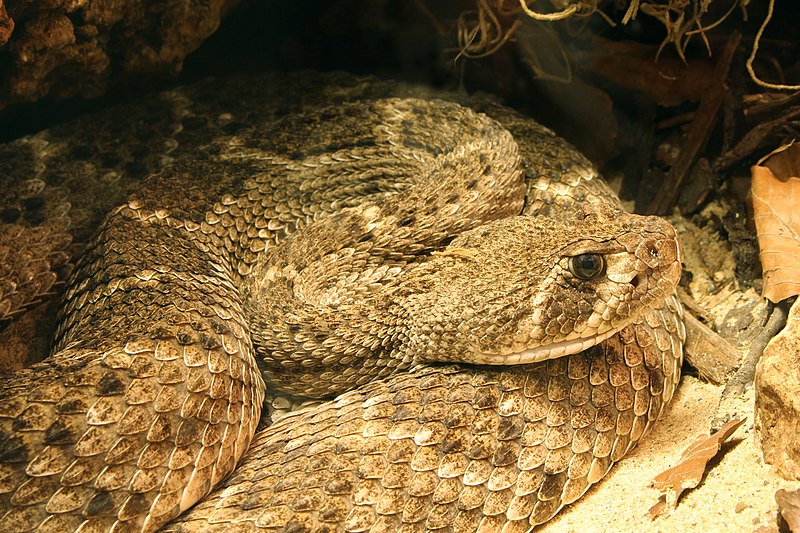
Western diamondback rattlesnakes, native to the deserts of North America, are among the longest-living snake species, often reaching up to 20 years. Their distinctive diamond-patterned scales and signature rattle serve as warnings to potential predators. These snakes primarily feed on rodents and small birds, relying on their potent venom to immobilize prey. Known as ambush predators, they often hide in brush or burrows to surprise their targets. Despite their fearsome reputation, western diamondbacks play a vital role in controlling rodent populations in their ecosystems. They have developed resistance to certain diseases, which contributes to their extended lifespan. Conservationists work to educate people on their importance in the wild, as they are often misunderstood and killed out of fear.
Painted Turtle
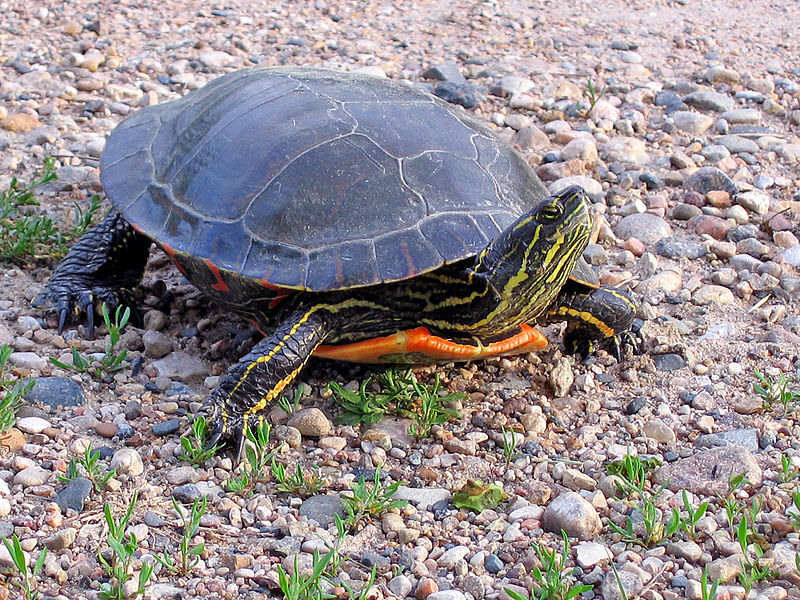
Painted turtles, with their vibrant, colorful shells, are a common sight in North America’s ponds, lakes, and rivers. These turtles can live up to 40 years in the wild, thanks to their adaptable nature and robust immune systems. Painted turtles are omnivores, consuming aquatic plants, insects, and small fish, which provide a balanced diet for longevity. During the colder months, they hibernate by burrowing into the mud, which slows their metabolism and conserves energy. Their ability to thrive in diverse climates has made them resilient against environmental changes. Painted turtles are popular among nature enthusiasts for their beauty and longevity. Their striking appearance and adaptability make them a fascinating example of reptilian resilience.
This article originally appeared on Rarest.org.
More From Rarest.Org
11 Remarkable Bat Species with Impressive Migration Journeys
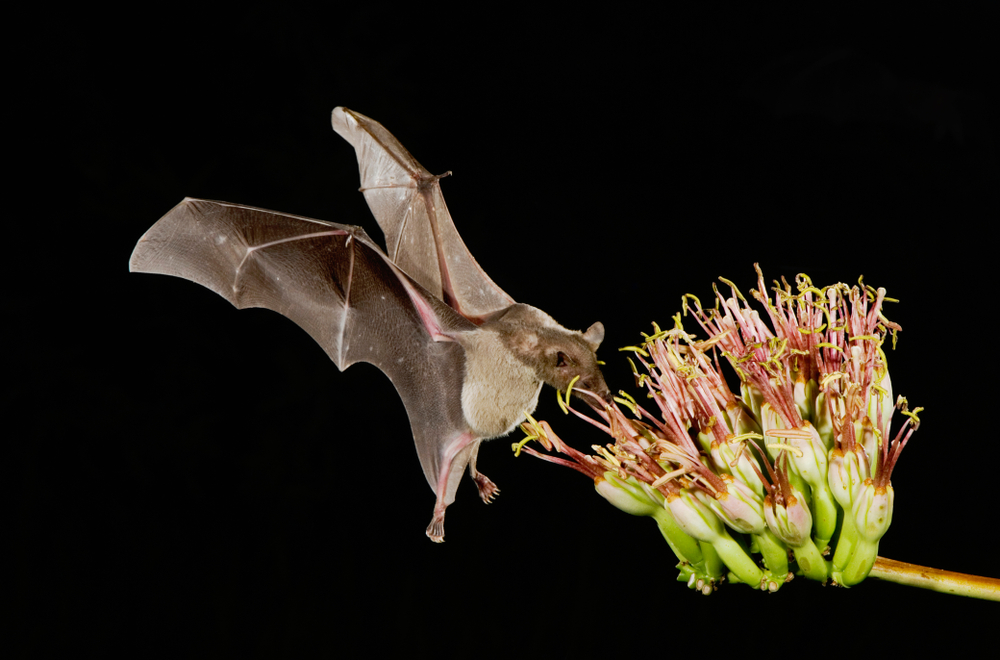
Bats are some of nature’s most remarkable travelers, with many species undertaking long migrations in search of food and suitable breeding grounds. These fascinating creatures can cover hundreds or even thousands of kilometers, navigating across continents, coastlines, and mountain ranges. Read more.
11 Largest Waterfalls in the World
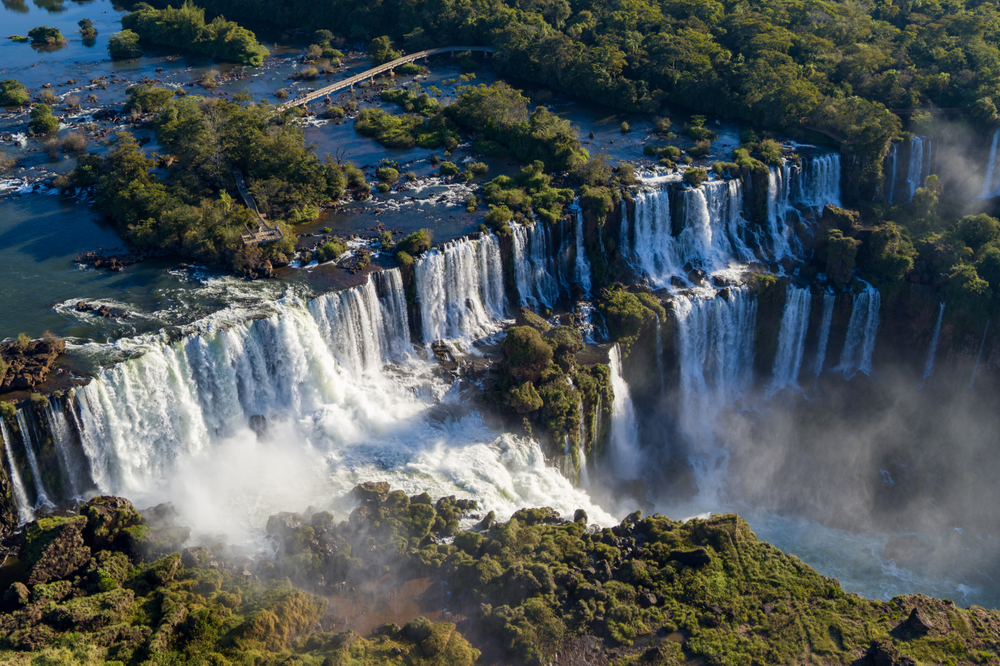
Waterfalls are some of nature’s most captivating displays, with their powerful cascades and breathtaking heights. The world is full of these majestic wonders, and each one offers a unique spectacle, whether it’s their height, width, or the natural landscape surrounding them. Read more.
20 Mysterious Caves from Around the World with Hidden Secrets
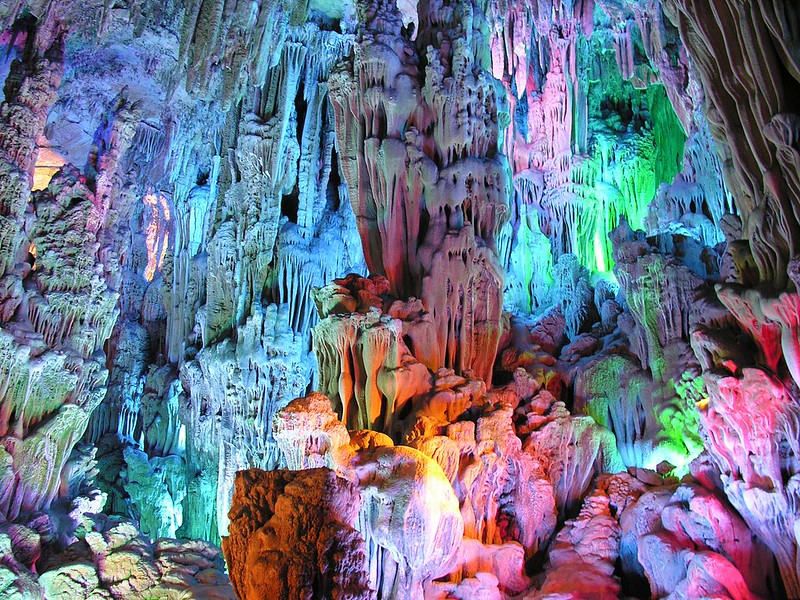
Caves have long fascinated humanity, offering glimpses into hidden worlds beneath the Earth’s surface. These mysterious formations often hold secrets from the past—ranging from ancient art and religious rituals to natural wonders that seem otherworldly. Read more.
